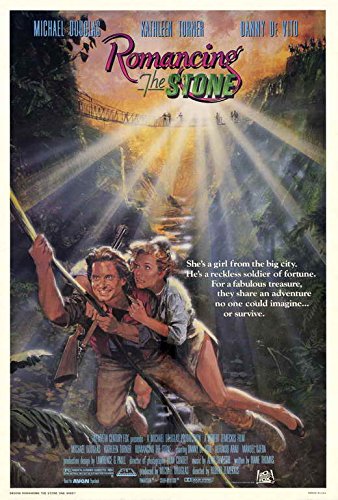Joan Wilder: You’re the best time I’ve ever had.
Jack Colton: I’ve never been anybody’s best time.
Romancing the Stone Elevator Pitch
Romance novelist fish-out-of-waters through the Columbian wilds as she attempts to ransom her sister from smalltime schemesters by delivering the map to a jewel called El Corazon, meets Indiana Jungle Jones and winds up afoul of not only the schemesters but a faction of the Colombian army — all hell bent on taking the jewel for themselves.
Those Were Italian!
Few movies sew those nostalgic oats quite like Romancing the Stone. The movie implanted one of my earliest moviegoing memories that didn’t involve Star Wars. Robert Zemeckis’ 1984 adventurer wasn’t my very first theatrical live action film experience, it often feels like it. An early moment in the film indirectly reminds me what it was like to be six years old and staring up at the big screen in wonder.
Jack grows tired of Kathleen Turner’s romance novelist hobbling around the South American jungle. He takes his machete and chops the heels off her shoes.
Joan Wilder: Those were Italian.
Jack Colton: Now they’re practical.
What did I know about women’s shoes? Not a thing. I probably wore velcro Kangaroos with the little pockets to the theater. Still, 6yo me marked that down as hilarious. I remember using that “Those were Italian!” line in many different circumstances. I might accidentally break something and exclaim “Those were Italian!” like a catch-all expletive. You get the picture. I never succeeded in making “Those were Italian!” my own personal catchphrase, but the scene itself acts as a time capsule. I’m instantly granted the gift a piece of me as I was in 1984.
Nostalgia’s a wonderful thing in moderation. We can never go home again, but cinematic moments like these, the ones we latch onto for whatever reason, grant us a fleeting reprieve from the bustle of adulthood.
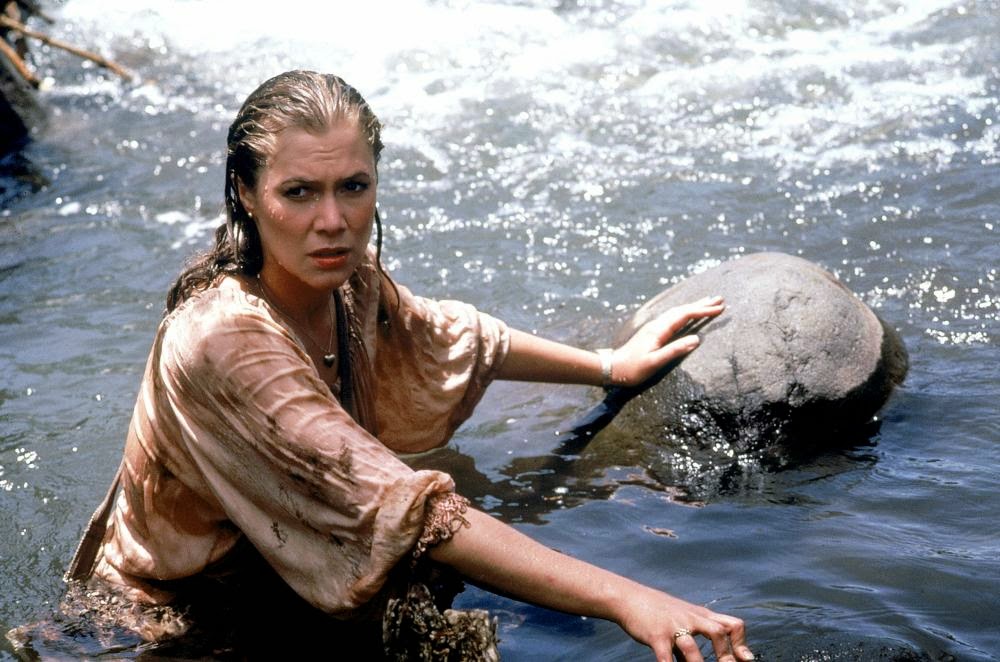
Kathleen Turner Overdrive
After reading Kathleen Turner’s nuclear interview by David Marchese of Vulture, my wife and I began winding through Turner’s filmography. I started with a first-time viewing of The War of the Roses (1988) and then returned to the beginning of the Douglas/Turner/DeVito era with a Romancing the Stone refresher.
Over the years, Stone has become comfort food for this 80’s soul. Unfortunately it seems that younger viewers don’t appreciate the simplicity of Stone‘s form and function. My observations come purely from casual browsing of Letterboxd.com, so please don’t @ me with demographic studies that show most women aged 18-25 rate Romancing the Stone four stars or higher (unless of course those demographic studies support my remedial investigation).
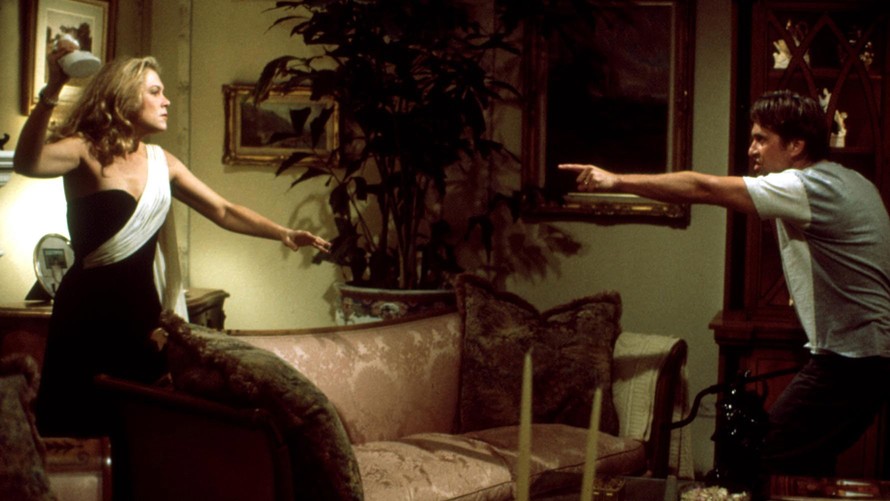
Turner just goes for it. In every film. That was never more apparent than in The War of the Roses where she gives an absolutely savage performance. I’ve always felt that Romancing the Stone was a Michael Douglas movie — the charmer, the expat vigilante treasure hunter. I had it all wrong. Turner’s romance novelist makes the journey from a fainting woman of words to an action hero. Without Turner’s commitment to both sides of Joan Wilder, the scripted character could have remained nothing more than a distressed damsel. She made more of the character than was on the page.
Misplaced Treasure of Classic Cinema
While Romancing the Stone proffers a style of entertainment rooted in the trends of the 1980’s, it also recalls screwball films and swashbuckling action/adventurers of the 1930’s. Michael Douglas’ Jack Colton character might be a less studious Indiana Jones, but he’s, at heart, an amalgamation of many matinee idols. Gary Cooper or Johnny Weissmuller without the patina of glossy perfection. And it’s hardly a stretch to imagine Cary Grant and Katherine Hepburn as Jack Colton and Joan Wilder slashing through a soundstage populated by ferns and palms and verbal barbs.
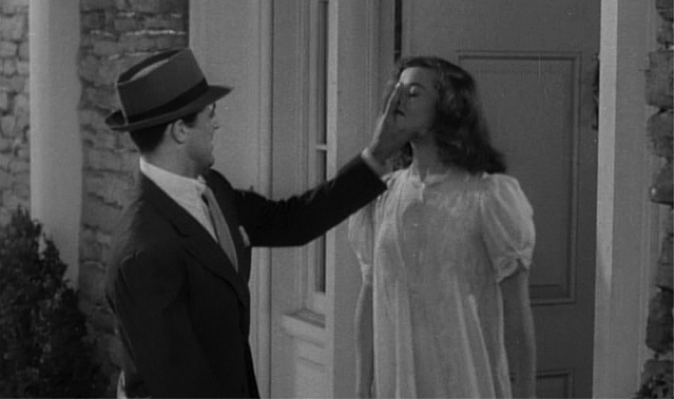
The Grant/Hepburn substitution feels natural. Robert Zemeckis directed Romancing the Stone with the pretense of propping up the charisma of his stars as the main attraction, a decidedly old school filmmaking methodology. Stone sells the pretense of action and stuntwork, but the focus remains small and the danger never feels entirely real (owing to the cartoonish pursuit by the hyperbolic DeVito) and his megalomaniacal-ish cousin Ira (Zack Norman). Though the stunts occur in regular beats, none of them take the form of a centerpiece — except perhaps the escape from Juan’s compound. Even that, however, stands out as a result of the comedic talents of the great character actor Alfonso Arau.
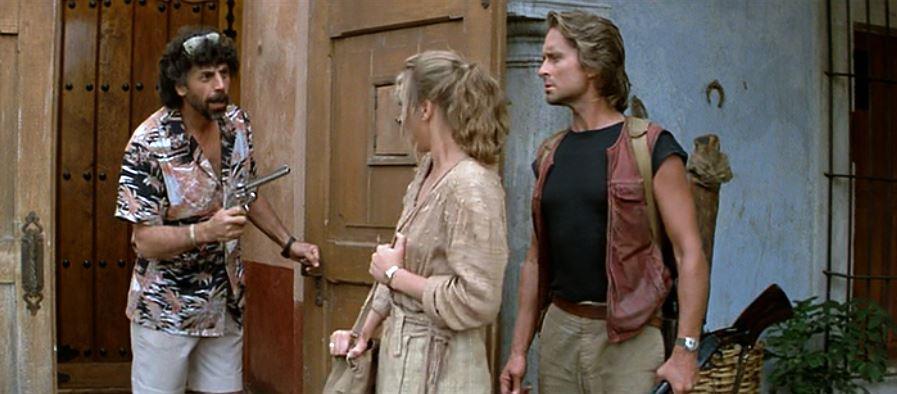
It’s entirely understandable hen someone says that Romancing the Stone didn’t live up to their expectations. Stone retains its status as a certified 80s classic. As a result viewers’ expectations likely skew bigger and broader. Raiders of the Lost Ark, the standard-bearer for 1980’s adventure cinema, casts a long shadow over other similar films of the era.
Character and Spectacle, Take 2
Best known for the Back to the Future films, Robert Zemeckis makes character-driven narratives within the modern iteration of the Hollywood dream machine. At its most basic component, behind the flash and spectacle of a time-traveling DeLorean, Back to the Future, like Romancing the Stone, is high concept narrative buoyed by the establishment and development of character.
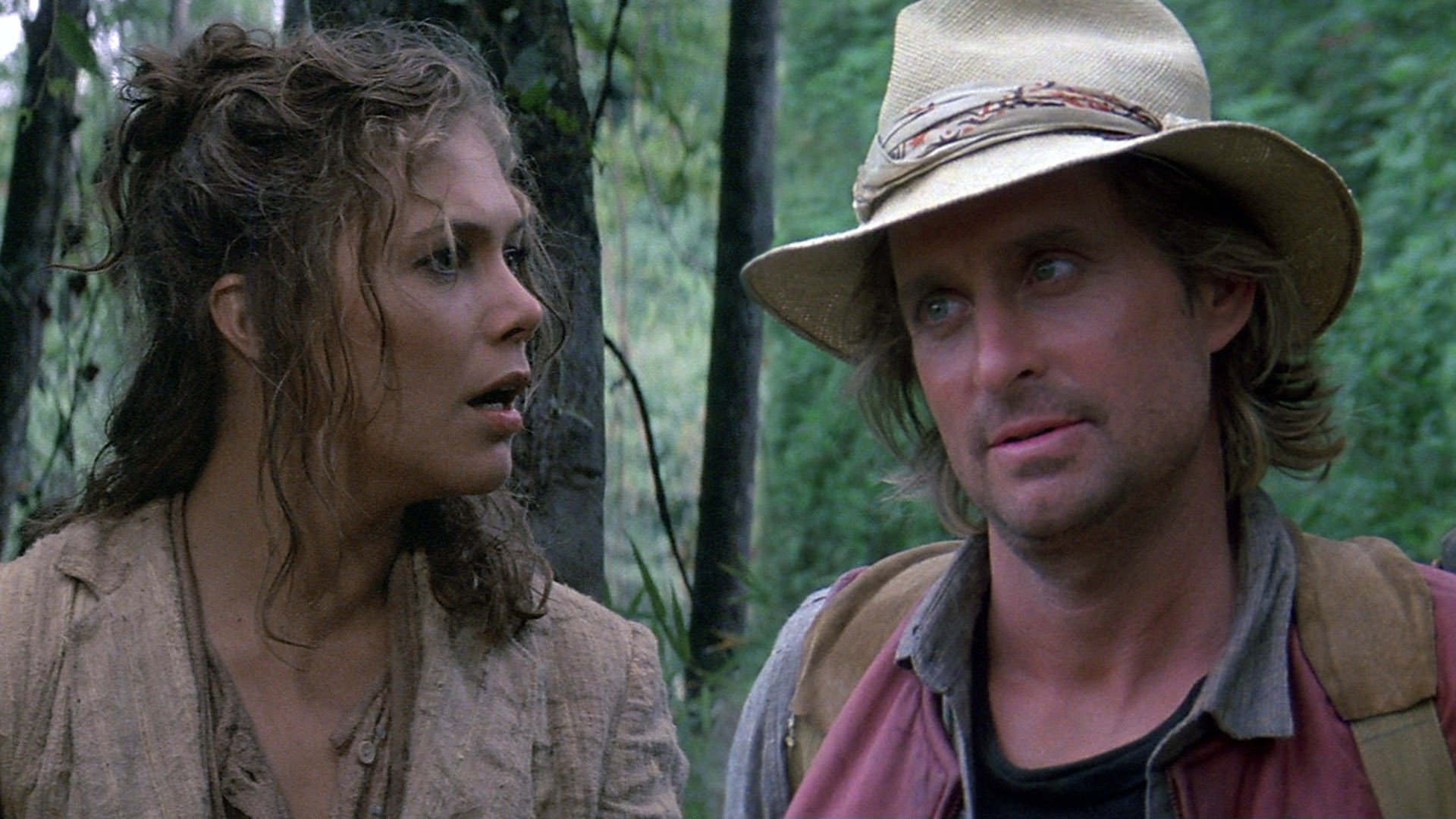
I’ll forgive first-time viewers that didn’t have their expectations met, but I’ll also suggest they go back for a second ride once their initial disappointment has evaporated. Focus on the interplay between Douglas and Turner. Focus on how their screwball banter and evolves beyond the idol worship of shadowy matinee man of action and romance. Consider how Romancing the Stone and Douglas then undermine the notion of the soft-focus man meat that inhabits Joan Wilder’s romance novels.
If all else fails, just give it another chance to appreciate Hollywood’s discovery of Kathleen Turner, superstar. She’s the real gem here, not the costume jewelry macguffin Joan and Jack rescue from a cave.
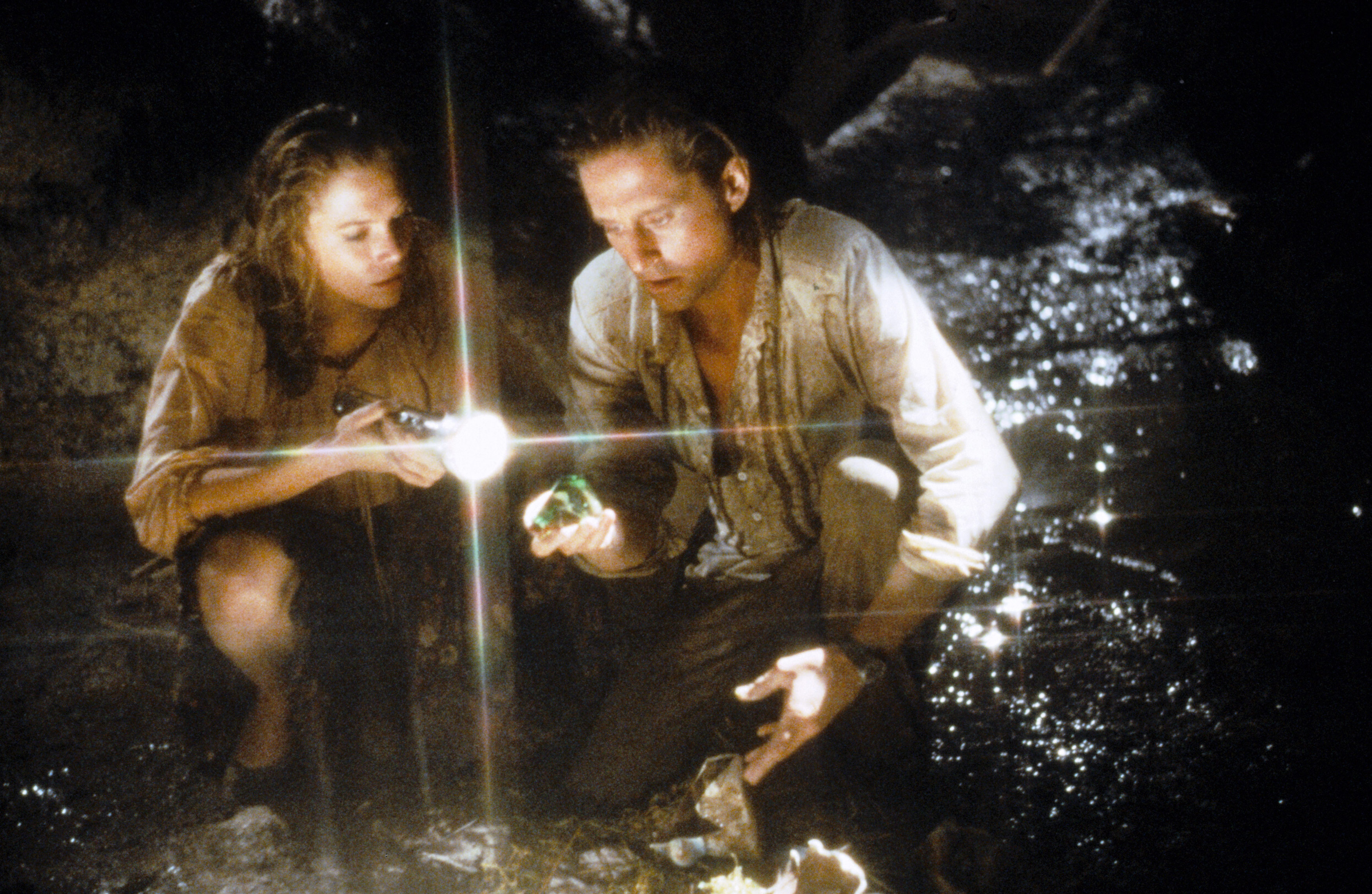
On the next episode of 80’s Flashback, I’ll exorcise some demons and discuss my disappointment with The Jewel of the Nile.


